This post may contain affiliate links. For more information, please see our affiliate policy.
For the best, most delicious homemade Chicken Broth recipe, start with a whole raw chicken or chicken pieces and simple vegetables and herbs. At the end of it, you’ll have 4 cups of delicious cooked chicken and 2 quarts of the best chicken broth you’ve ever tasted. Freeze it for your future soups, stews, and casseroles.
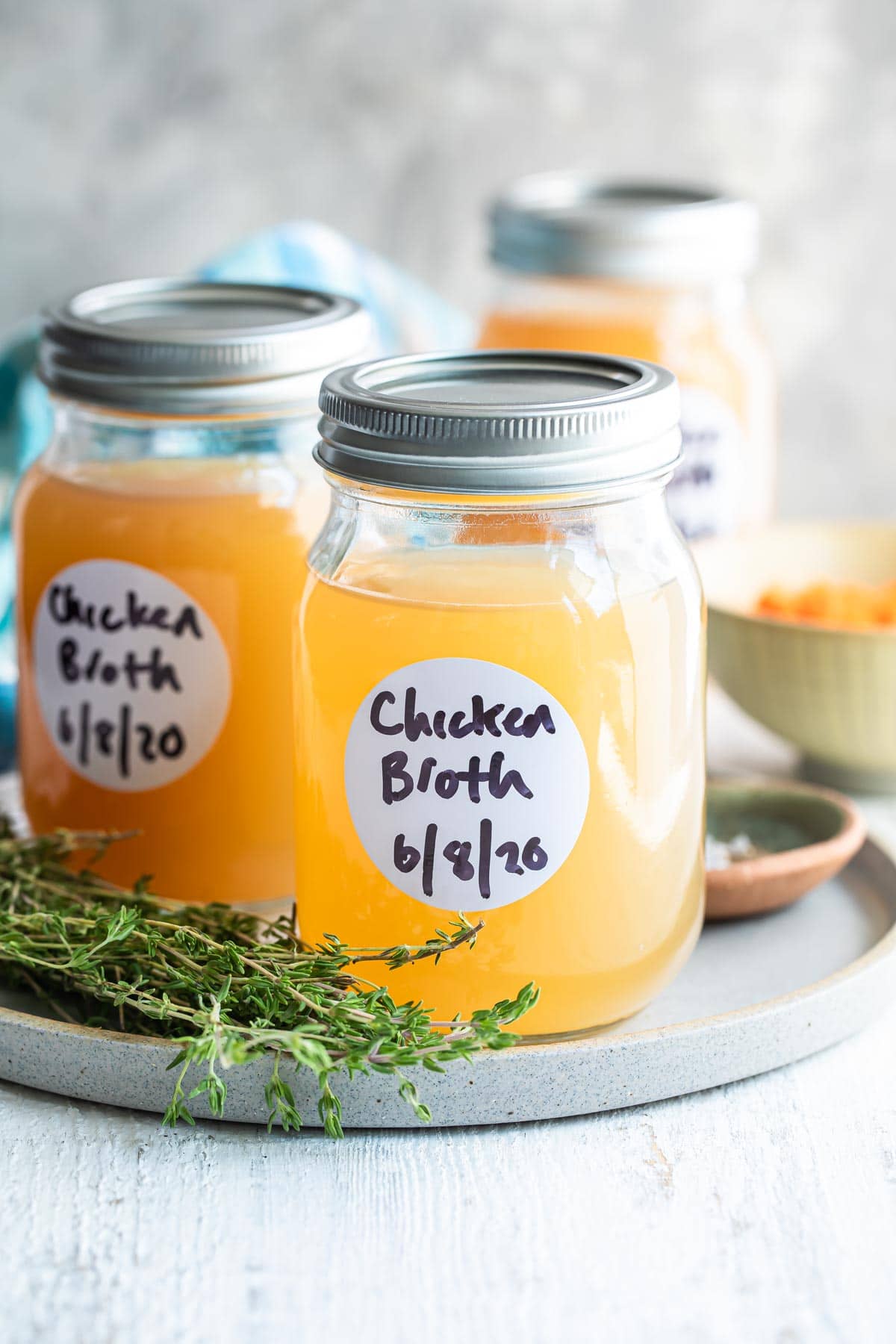
One of life’s simple pleasures is poaching a whole chicken. Here we do it to make homemade broth, but you can also do it to make chicken – and either way, you get both!
In my opinion, this is a fun, relaxing Sunday ritual that more people should try. We are always so busy on the weekends, and poaching a chicken forces you to press pause. It’s fulfilling to create with your hands, so enjoy the moments you chop your veggies and pull spices off their sprigs. You are creating something.
At the end, you’ll have big batch of broth that’s perfect for soups, sauces, and even gravy. And of course, you’ll have the chicken. It’s perfect in Chicken Tinga, Chicken Salad, or in a chicken soup recipe. Whether it’s Chicken Noodle Soup with chunks of tender chicken or creamy Chicken Soup with Wild Rice, nothing beats this cozy bowl of homemade comfort.
Table of Contents
Recipe ingredients
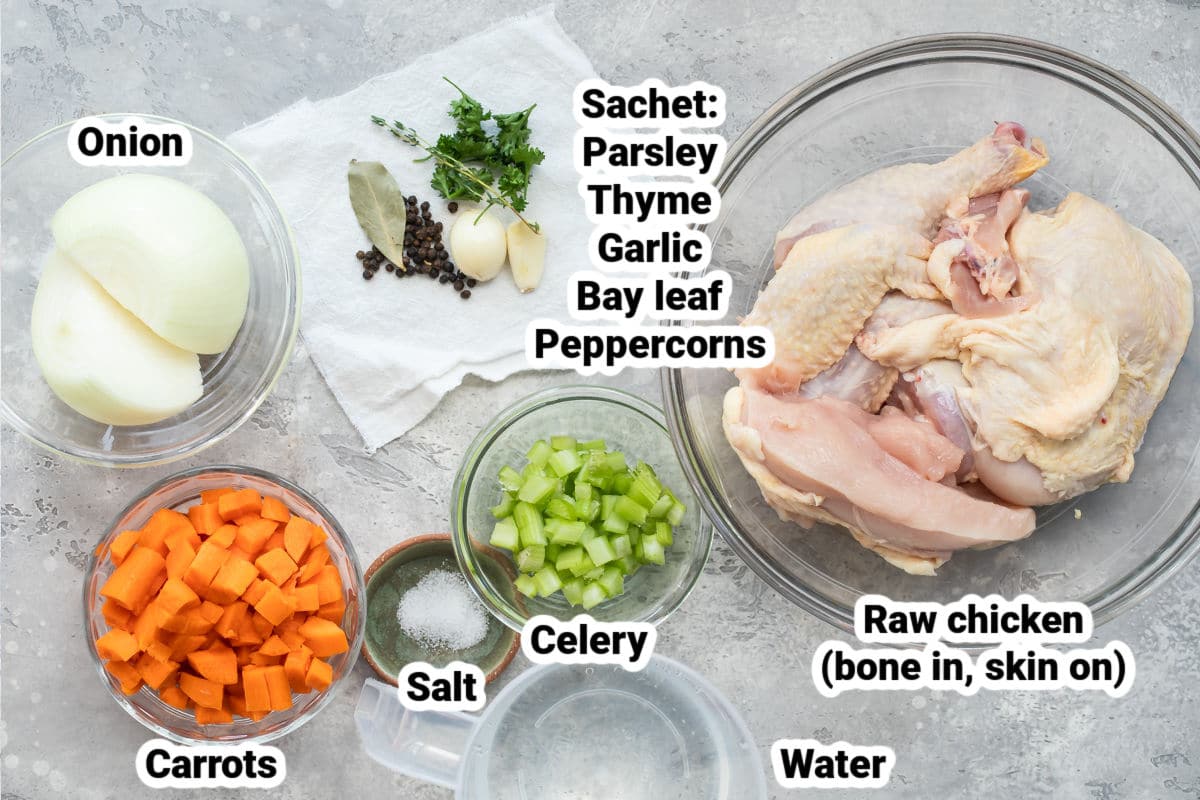
At a Glance: Here is a quick snapshot of what ingredients are in this recipe.
Please see the recipe card below for specific quantities.
Ingredient notes
- Chicken: This recipe uses a whole raw chicken or the equivalent of cut-up pieces (you can do 4 to 5 pounds of bone-in, skin-on chicken breast, thighs, drumsticks, necks, wings, whatever!).
- Organ meats: The heart and gizzard can be added to the broth if desired, but the liver should be discarded or reserved for another purpose.
- Cold water: Always start with cold water. This helps keep the broth clear, not cloudy. The amount of water used and the length of simmering time will determine the intensity of the broth.
- Vegetables: Some cooks save old vegetable trimmings to add to their broth. I prefer to start with new, fresh vegetables because I think the broth will taste better. So yes, we peel the carrots, and save your vegetable scraps for composting!
- Herbs and spices: A sachet is a fancy term for parsley stems, thyme, bay leaves, peppercorns, and optionally, garlic or cloves, tied up in a piece of cheesecloth with twine. You could also use a tea ball or loose-leaf tea bag to hold them. It makes it easier to pull these small ingredients out of the broth later. Or, you can just add everything straight to the pot since you strain the broth at the end.
Step-by-step instructions
- To a Dutch oven or large stock pot, add chicken and cold water to cover (see note 3). Over medium-high heat, bring to a boil. Immediately reduce heat to low and skim the foam off the top of the liquid with a spoon.
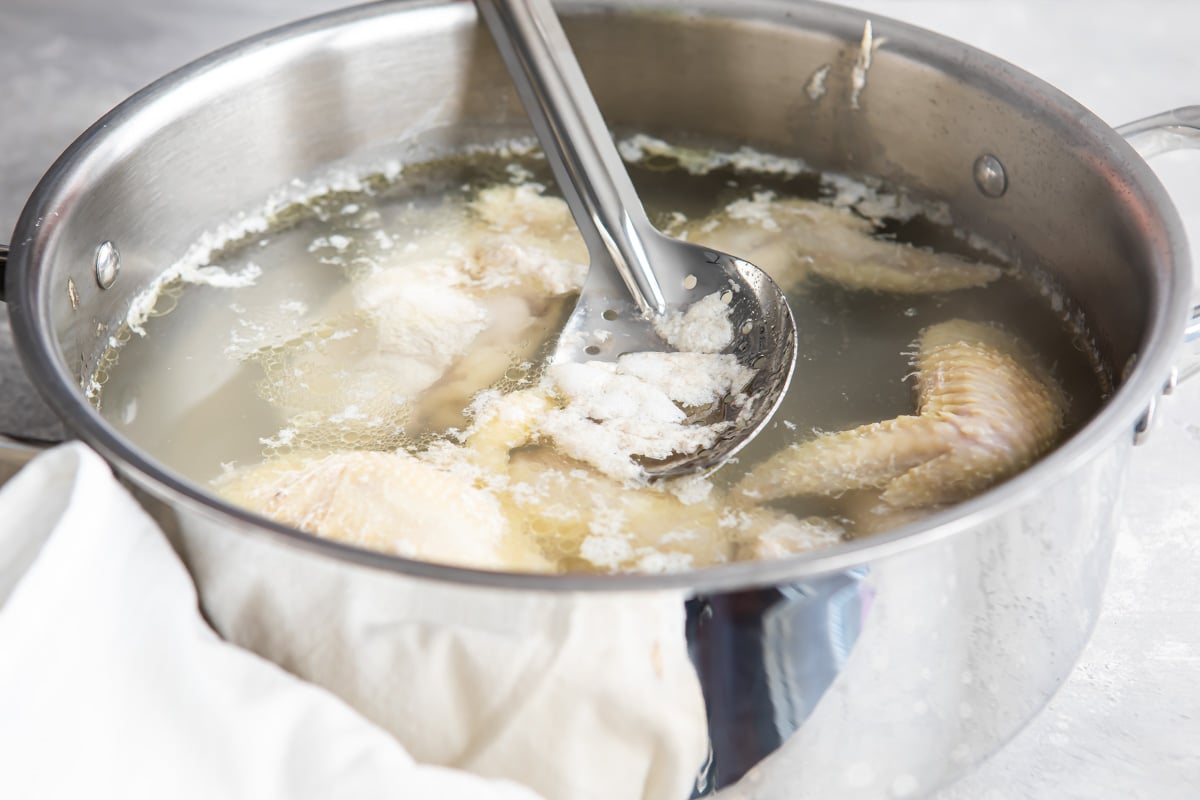
- To the pot add onion, carrot, celery, and salt. If desired, tie parsley stems, thyme, garlic, bay leaf, and peppercorns to make a sachet or add loosely to the pot.
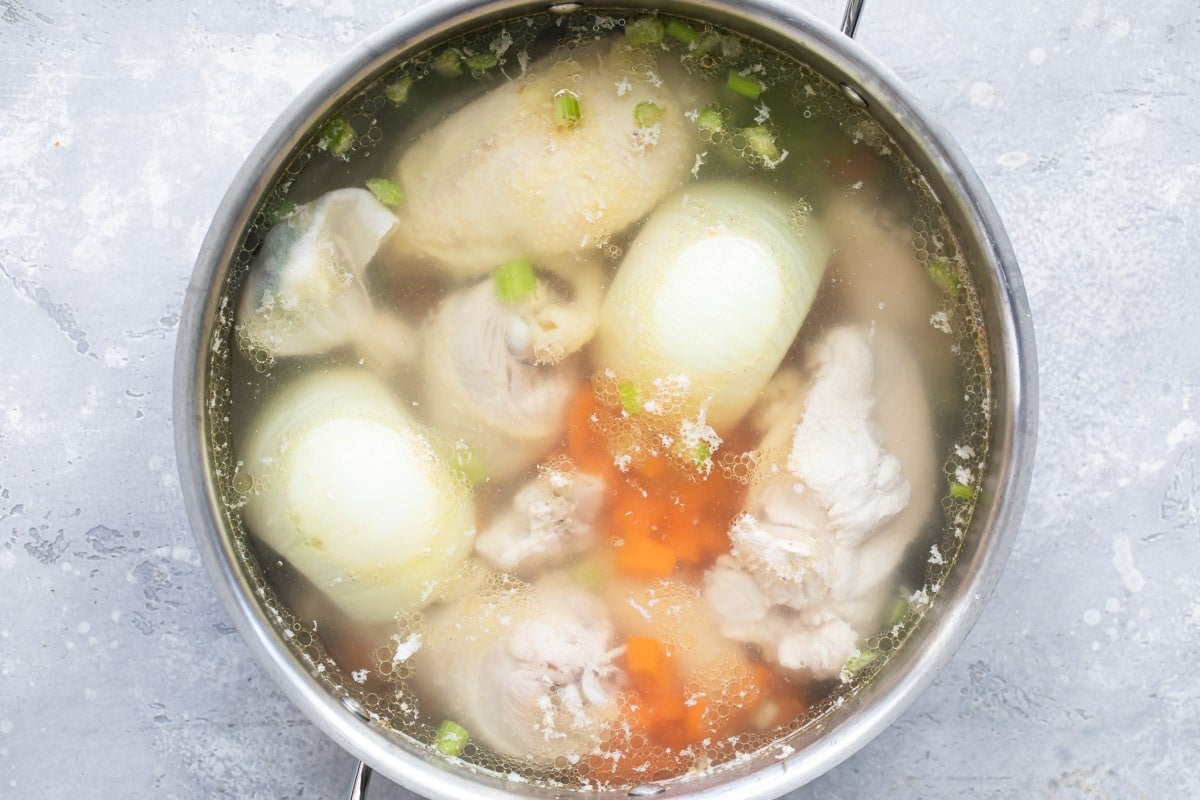
- Simmer gently (bubbles should barely break the surface at irregular intervals) until the chicken is cooked through, at least 1 hour or up to 5 hours. The longer the broth simmers, the more flavor it will have. (NOTE: After 1 hour, you should remove the chicken breasts from the pot to prevent them from drying out).
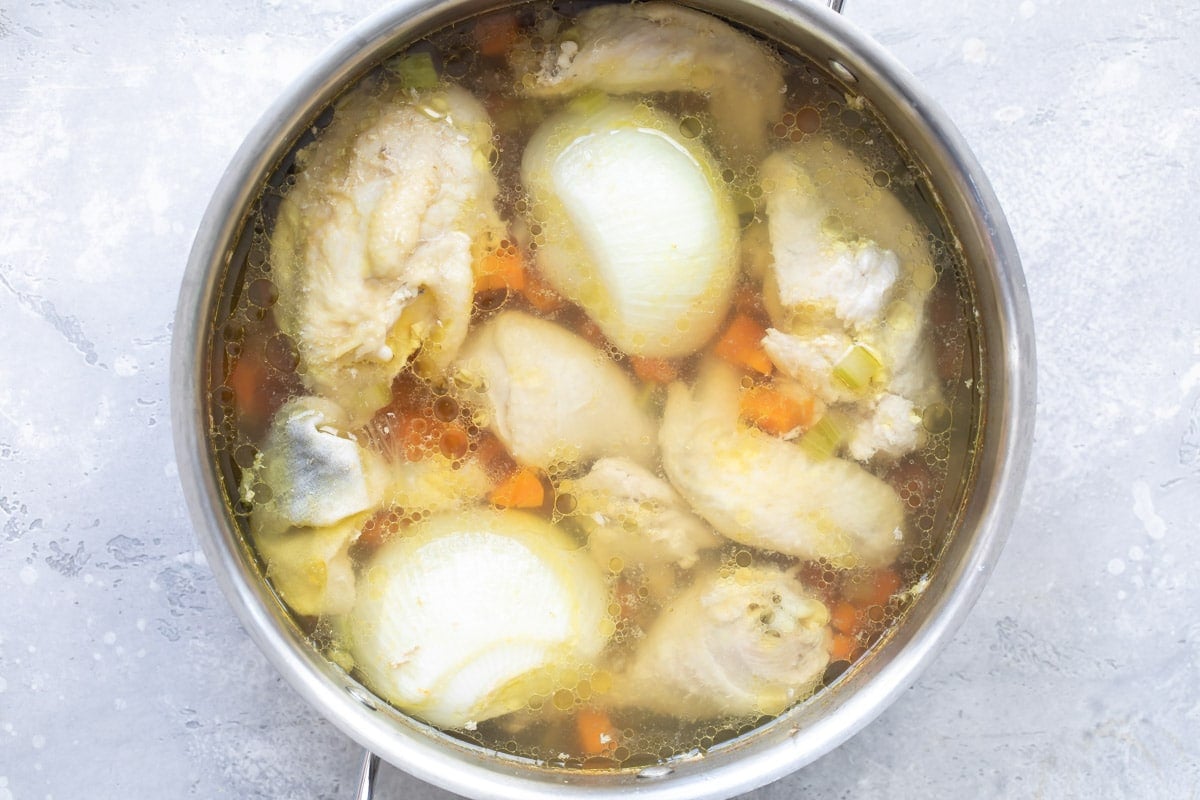
- Remove chicken from pan to a rimmed baking sheet or large bowl. Separate chicken, discarding skin and bones (you should have about 4 cups chicken).
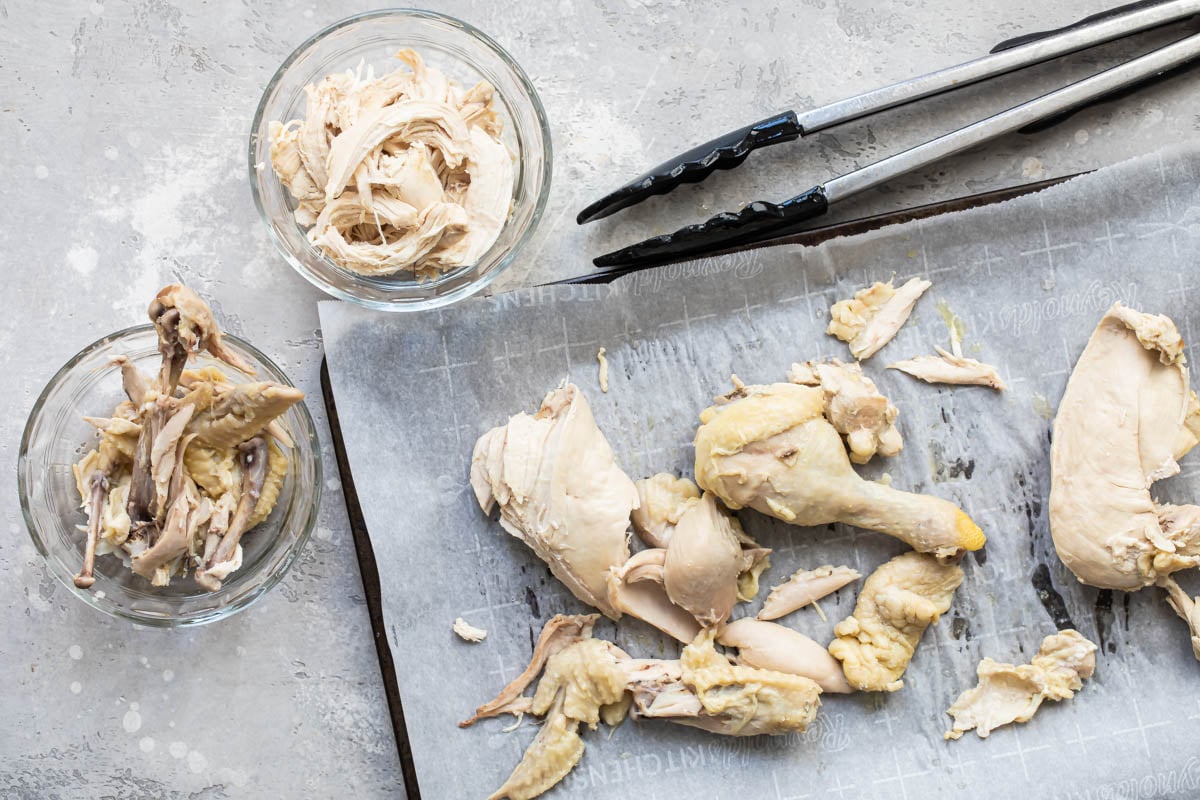
- Strain the broth through a fine-mesh sieve or cheesecloth. Place in a large bowl and chill covered overnight in the refrigerator.
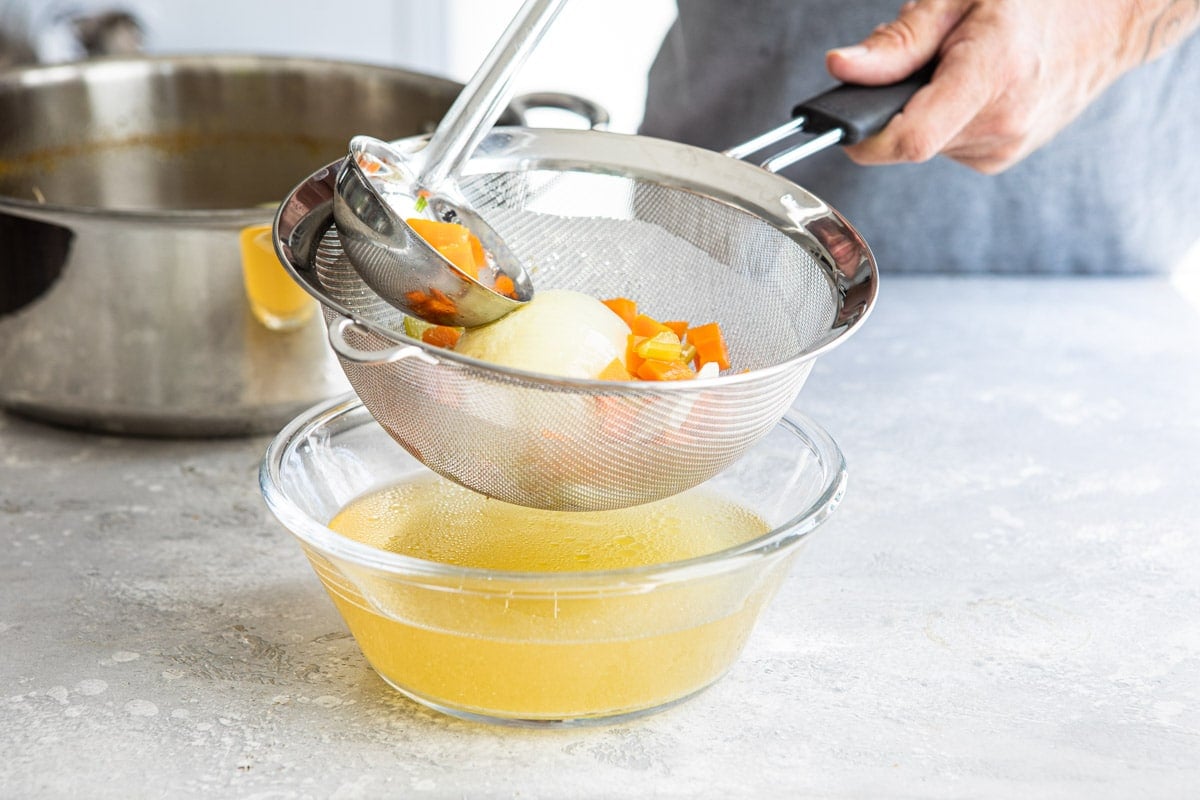
- The next day, scrape off the accumulated fat from the top of the stock and discard. Divide the broth into freezer-safe containers (leaving at least 1/2-inch for expansion), label, and freeze. Or, refrigerate and use within 4 days.
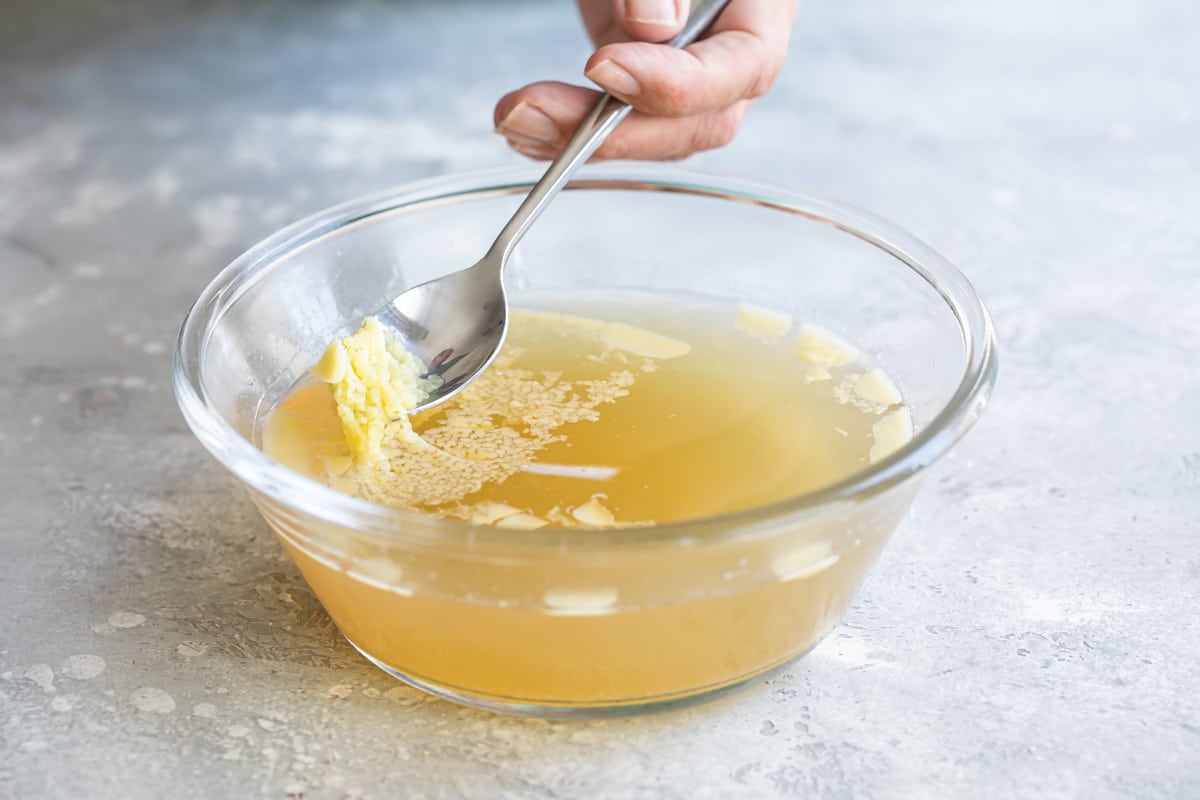
Recipe tips and variations
- Yield: This recipe makes about 8 cups (2 quarts) homemade chicken broth. You’ll also get 4 cups cooked chicken in the process.
- Refrigerate: Store chicken broth in the refrigerator and use within 4 days.
- Freezer: Divide the broth into freezer-safe containers (I like to use 16-ounce glass jars, but freezer bags work too) and leave 1/2-inch head space for expansion. Label and date, then freeze for up to 3 months. Thaw overnight in the refrigerator.
- Leftover roasted chicken carcass: To make chicken broth from a roasted chicken, I recommend adding the leftover roast chicken carcass to a pot with raw chicken. If you boil just a leftover roasted chicken carcass on its own, the broth will be thin and lack body and flavor.
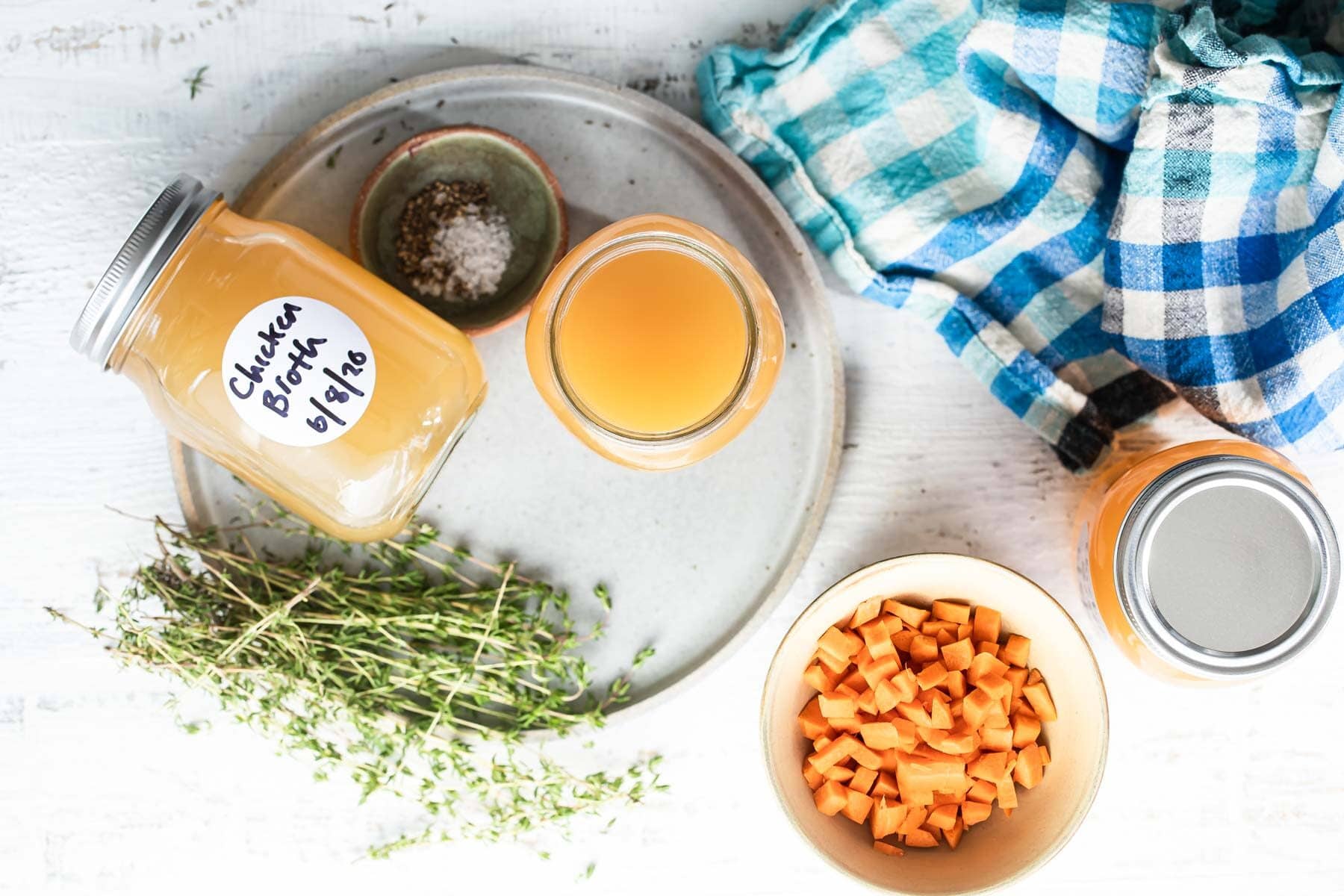
Frequently Asked Questions
Technically, stock is made with just bones, while broth is made with bones and meat.
You can flavor your broth with vegetables, herbs, and spices. If you don’t have much time or patience, add just a clove of garlic, a sliver of onion, and salt.
Yes, absolutely! Plain chicken broth is an absolutely delicious drink. If you want to spruce up your cup of cozy broth, try hot sauce, fresh lemon juice, and some fresh cilantro sprigs.
If your recipe calls for chicken broth, it’s looking for that extra savory flavor. You could substitute bouillon paste or cubes which will give you the same effect. But in some cases, depending on the recipe, you don’t absolutely need chicken broth and could just substitute water. But, you’ll lose flavor that way. It just depends on what you are cooking.
Put your chicken broth to work
Soup and Stew Recipes
Mexican Chicken Soup
Italian Recipes
Italian Wedding Soup
Soup and Stew Recipes
Chicken Ramen
Soup and Stew Recipes
Slow Cooker Ham and Bean Soup
Join Us
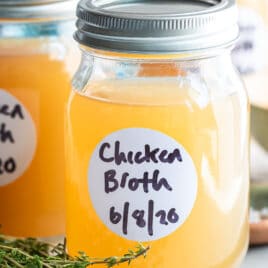
How to Make Chicken Broth
Equipment
- mason jars (I love storing my leftovers in Ball Jars)
Ingredients
- 1 4 to 5 pound whole chicken cut into pieces and giblets removed (see note 1 & 2)
- Cold water about 12 cups (see note 3)
- 1 medium onion peeled and halved
- 1 large carrot peeled and coarsely chopped, or 2 medium carrots (see note 4)
- 1 celery rib coarsely chopped
- 1 tablespoon salt
Sachet (see note 5):
- 6 fresh parsley stems
- 1 sprig fresh thyme
- 2 cloves garlic
- 1 bay leaf
- 1 teaspoon whole black peppercorns
Instructions
- To a Dutch oven or large stock pot, add chicken and cold water to cover (see note 3).
- Over medium-high heat, bring to a boil. Immediately reduce heat to low and skim the foam off the top.
- To the pot add onion, carrot, celery, and salt. If desired, tie parsley stems, thyme, garlic, bay leaf, and peppercorns to make a sachet or add loosely to the pot (see note 5).
- Simmer gently (bubbles should barely break the surface at irregular intervals) until the chicken is cooked through, at least 1 hour or up to 5 hours. The longer the broth simmers, the more flavor it will have. (NOTE: After 1 hour, you should remove the chicken breasts from the pot to prevent them from drying out).
- Remove chicken from pot to a rimmed baking sheet or large bowl. Separate chicken, discarding skin and bones (you should have about 4 cups chicken).
- Strain the broth through a fine-mesh strainer or cheesecloth. Place in a large bowl and chill covered overnight in the refrigerator.
- The next day, scrape off the accumulated fat from the top of the stock and discard. Divide the broth into freezer-safe containers (leaving at least 1/2-inch for expansion), label, and freeze. Or, refrigerate and use within 4 days.
Recipe Video
Notes
- Chicken: This recipe uses a whole raw chicken or the equivalent of cut-up pieces (you can do 4 to 5 pounds of bone-in, skin-on chicken breast, thighs, drumsticks, necks, whatever!).
- Organ meats: The heart and gizzard can be added to the broth if desired, but the liver should be discarded or reserved for another purpose.
- Cold water: Always start with cold water. This helps keep the broth clear, not cloudy. The amount of water used and the length of simmering time will determine the intensity of the broth.
- Vegetables: Some cooks save old vegetable trimmings to add to their broth. I prefer to start with new, fresh vegetables because I think the broth will taste better. So yes, we peel the carrots, and save your vegetable scraps for composting!
- Herbs and spices: A sachet is a fancy term for parsley stems, thyme, bay leaves, peppercorns, and optionally, garlic or cloves, tied up in a piece of cheesecloth with twine. You could also use a tea ball or loose leaf tea bag to hold them. It makes it easier to pull these small ingredients out of the broth later. Or, you can just add everything straight to the pot since you strain the broth at the end.
- Yield: This recipe makes about 8 cups (2 quarts) homemade chicken broth. You’ll also get 4 cups cooked chicken in the process.
- Storage: Store chicken broth in the refrigerator and use within 4 days.
Nutrition
Meggan Hill is a classically-trained chef and professional writer. Her meticulously-tested recipes and detailed tutorials bring confidence and success to home cooks everywhere. Meggan has been featured on NPR, HuffPost, FoxNews, LA Times, and more.

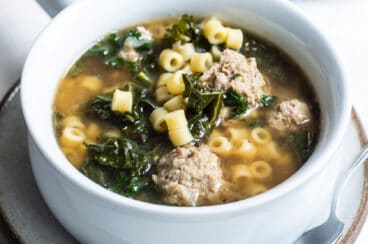

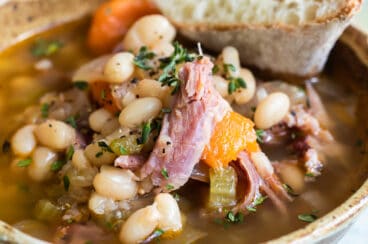
Simple and delicious!
Thank you!
Glad you enjoyed it, Kim! – Meggan